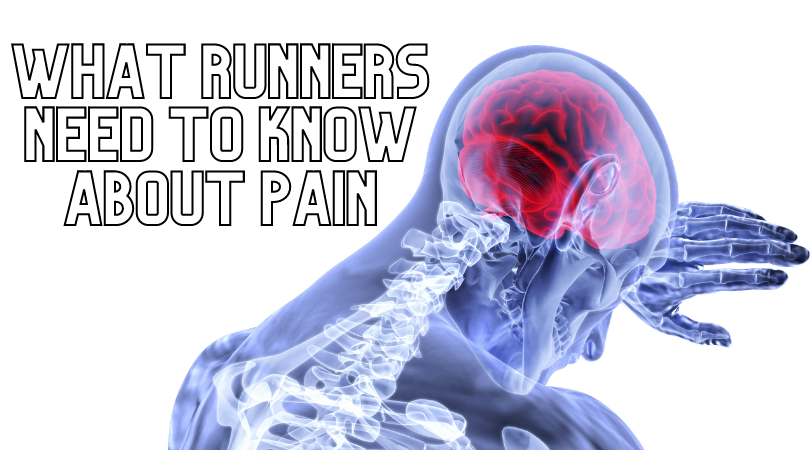What runners need to know about pain

Step 1 of ‘explain pain’ is that all pain is generated from the brain. Several factors determine your brain’s reason for triggering pain & at what intensity. The level of pain experienced does not necessarily reflect the amount of tissue damage. This is a foundation principle all runners should understand to get a better grip over running-related injuries. When pain persists beyond it’s usual healing time (anything >3 months), it is difficult to see how it can serve a useful purpose. But even when it’s persistent or severe, it exists because the brain has somehow concluded, for some reason or another, often completely subconsciously, that you are threatened and in danger. Therefore, the trick is finding out why the brain has come to this conclusion. Below are 4 components that determine the trigger & severity.
Context
This explores the ways to which you became injured and what meaning you have attributed to the experience. For example, was it during a marathon which cost you a PB? Or was it a traumatic injury that you replay in your head? On the other hand, was it a relatively minor incident that you have overcome in the past? These thoughts and factors all feeds into your mind which helps the brain evaluate the level of threat.

Explain pain: Belief
Here are some common beliefs:
- I get injured all on one side because my glutes don’t switch on
- I have one leg longer than the other and my hips are not aligned
- My injuries are caused by me ‘over-pronating’
- I swear by dry-needling, it has helped me in the past & I recommend it to everyone
So with the above list in mind, what beliefs do you have about your injury, healing process & recovery plans? A lot of the statements above are very dis-empowering and surprisingly, not backed up by evidence.
Fear & worry
Some runners are so frightened of triggering their pain that they avoid activity all together. In fact, the brain can even trigger signals just from the thought of doing something painful. This can obviously have very dire consequences if your fear & worry is not addressed appropriately. For runners specifically this could be fear of a missed diagnosis or the fear it could be something worse.

Experience
Your brain will evaluate the severity by drawing on previous experiences. For instance, past injuries experience by yourself or someone you know. So ask yourself, have you had a friend with the same injury that forced them to retire from running? This can have a direct influence and blends in with all the topics above. The first step is recognizing that the brain is directly responsible. It determines our survival but can be misguided in some cases. I highly recommend a video by Lorimer Moseley for more information.
Relevant Blog posts
Relevant Podcast episodes
- Pain Science 1: Explaining Pain
- Addressing common running misconceptions 1: Pain
- Understanding the mind body connection with Jeff Craigen
